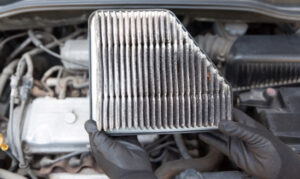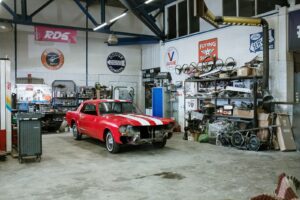Lacquer paint is a classic and traditional finish that has been used for decades in the automotive industry, particularly for restoring vintage cars. This type of paint is known for its high gloss, deep color, and durability, making it a popular choice among car enthusiasts and restorers.
Purpose
The main purpose of lacquer paint is to provide a durable and glossy finish on a car’s surface. It is typically applied over a primer coat, which helps to provide a smooth surface for the lacquer to adhere to. This type of paint is also known for its ability to dry quickly, which helps to minimize the risk of dust or other particles settling onto the wet paint surface.
Importance
Using lacquer paint on a vintage car is important because it helps to restore the car’s original appearance, preserving its value and history. Additionally, lacquer paint provides a durable finish that will help to protect the car’s body from the elements and prolong its life.
Benefits
Lacquer paint has several benefits that make it an ideal choice for restoring vintage cars. Firstly, it offers a high gloss finish that enhances the car’s appearance, giving it a classic and timeless look. Secondly, it is relatively easy to apply and dries quickly, which means that the car can be put back into service soon after the paint job is complete. Thirdly, lacquer paint is also relatively easy to repair and touch-up, making it a convenient option for maintaining the car’s appearance over time.
How to Use It
- Prep the Surface: Before applying lacquer paint, the car’s surface should be thoroughly cleaned and prepped. This includes removing any rust, dirt, or old paint, as well as sanding down any rough or uneven areas.
- Apply Primer: Once the surface is clean and smooth, a primer coat should be applied. This helps to provide a smooth surface for the lacquer to adhere to and also helps to prevent rust and corrosion.
- Apply Lacquer Paint: After the primer coat is dry, the lacquer paint can be applied. It is recommended to use a spray gun for the application, as it provides a smooth and even finish. The paint should be applied in thin, even coats, allowing each coat to dry before applying the next.
- Allow to Dry: After the final coat of lacquer paint is applied, the car should be allowed to dry completely before being reassembled. It is recommended to give 24-48 hrs to dry
Precautions
- Use Respirator mask when using lacquer paint, as it can be toxic and produces fumes that can be harmful to inhale.
- Use of painting in a well-ventilated area, as lacquer paint produces strong fumes that can irritate the eyes and lungs.
- Avoid contact of lacquer paint with skin and eyes, as it can cause irritation or allergic reactions.
Why Was this Invented
Lacquer paint was first developed in the early 1900s as a way to provide a glossy, durable finish on cars. Prior to this, the most common types of automotive paint were enamel and oil-based paints, which were not as glossy or durable as lacquer. The invention of lacquer paint revolutionized the automotive industry, making it possible to create a high-quality, long-lasting finish on cars.
Other Types of Paint
Other types of paint that are commonly used in the automotive industry include:
- Enamel: A type of paint that is known for its durability and resistance to chemicals, oils, and heat. It is typically applied in multiple coats, and takes longer to dry than lacquer paint.
- Acrylic: A water-based paint that is known for its ease of use, low odor and quick drying time. It is also considered as more environmentally friendly than other types of paint. Acrylic paint has a good compatibility with modern color-matching systems and has good UV resistance, which can help prevent fading over time.
- Basecoat/Clearcoat: A type of paint system that utilizes a basecoat color layer and a clearcoat layer. The basecoat is responsible for providing the color, while the clearcoat is responsible for providing the gloss and protection. This type of paint system is often used in modern car manufacturing, as it allows for a wider range of colors and effects.
In conclusion
Lacquer paint is a great option when restoring your vintage car. It’s high gloss, deep color and durability makes it a popular choice among car enthusiasts and restorers. It is important to follow proper application techniques and safety precautions when using this type of paint, in order to achieve the best results and maintain the car’s original appearance.










